The confusion over what to look and feel for when routinely checking tyres for signs of conditions is not unfamiliar. So, we have recruited an unlikely ally to boost tyre safety knowledge amongst drivers.
Today, we have launched ‘Donut Ignore the Signs’ – a campaign designed to both educate drivers on the signs and symptoms of unhealthy tyres and encourage them to commit to the habit of checking their tyres once a month.
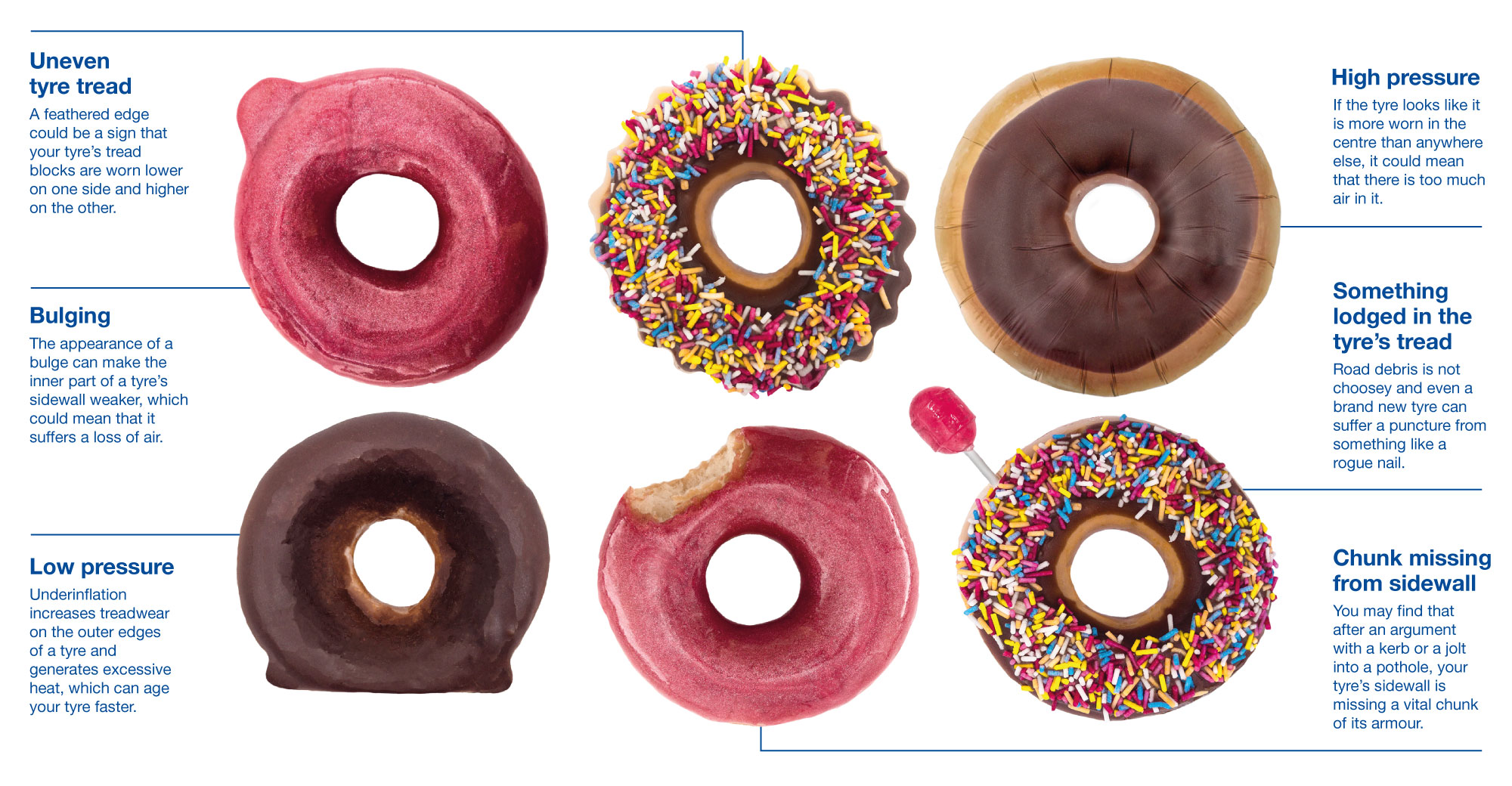
Why? Poor tyre maintenance was the most common reason for car accidents in the UK in 2016 (DfT*), and whilst it’s natural for tyres to change over time, there is a clear unease when it comes to checking their health.
Our research has revealed that more than a quarter (27 per cent) of people don’t know what the legal minimum tread depth limit is for their tyres, while a further 28 per cent haven’t a clue what the purpose of an EU tyre label is.
The six donut metaphors present the most common unhealthy tyre conditions in a clear, visual way, helping with the difficulties of at-home tyre checks.
Bulging
Hitting a kerb or a pothole can result in a tyre developing a bulge. A bulge can appear on either side of the tyre and usually resembles the shape of an egg. The appearance of a bulge can make the inner part of a tyre’s sidewall weaker, which could mean that it suffers a loss of air. The result? Loss of control, or at worst, you may have an accident. If in doubt, seek advice from an expert as there’s a likelihood that your tyre will need repairing or replacing immediately.
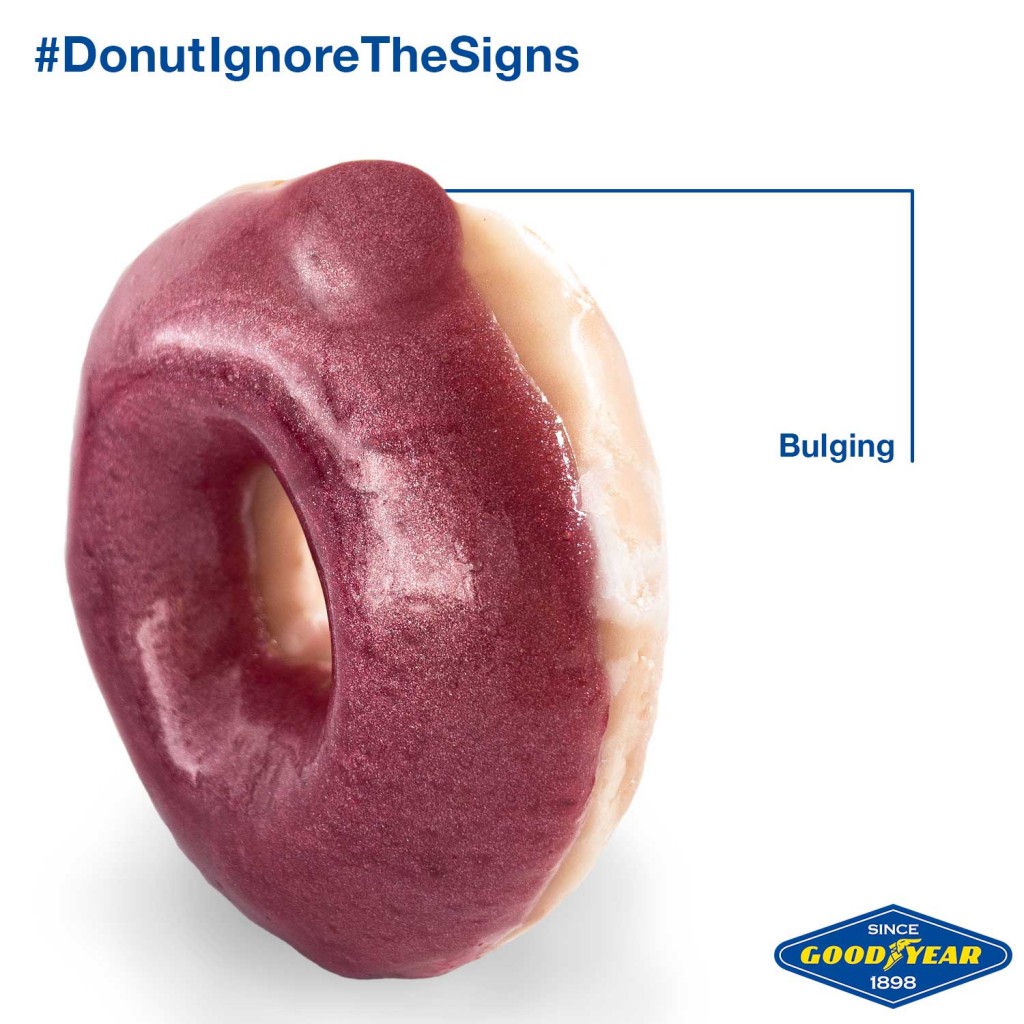
Uneven tyre tread
It’s normal for tyres to wear over time but sometimes they show signs of uneven wear, which could be a symptom of something more serious. Your first-port-of-call is to complete an at-home check for a ‘feathered’ edge; simply run your hand one way over the tyre and then back over the same section of the tyre.
If it feels smooth on one side but rough on the other, this could be a sign that the tread blocks are worn lower on one side and are higher on the other.If you find this, it may be time to get your tyres realigned.
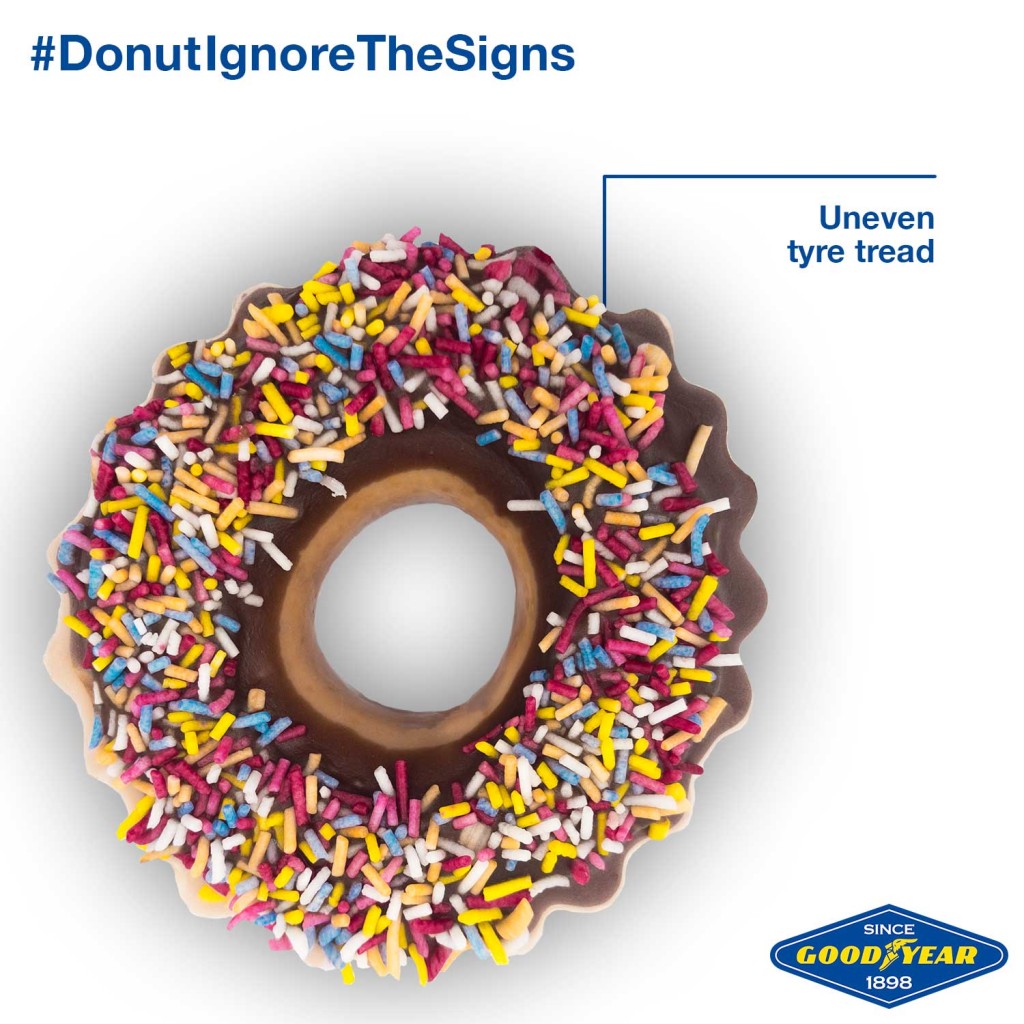
Low pressure
Tyres can deflate naturally over time, but if they are not checked regularly they can become dangerously underinflated. Underinflation increases treadwear on the outer edges of a tyre and generates excessive heat, which can age your tyre faster. Not only that, but softer tyres make your vehicle work much harder, resulting in increased rolling resistance and higher fuel consumption.
So, check what the correct tyre pressure should be – you can find this in your owner’s manual and inflate to the recommended pressure level.
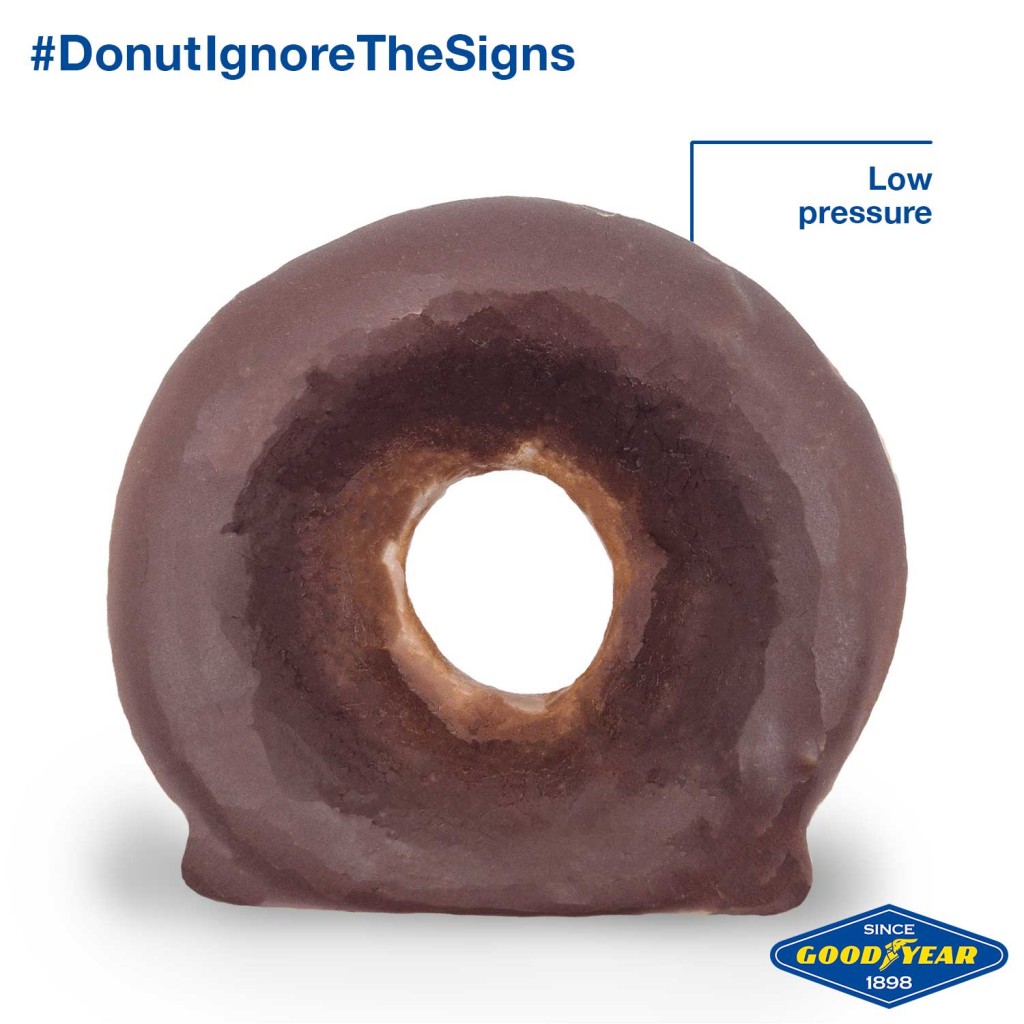
High pressure
If the tyre looks like it is more worn in the centre than anywhere else, it could mean that there is too much air in it. The tyre will have less contact with the road resulting in less traction, poorer braking, faster wear and an increase in stopping distance.
So, check what the correct tyre pressure should be – you can find this in your owner’s manual or on the sidewall of your tyre – and deflate to the recommended pressure level.
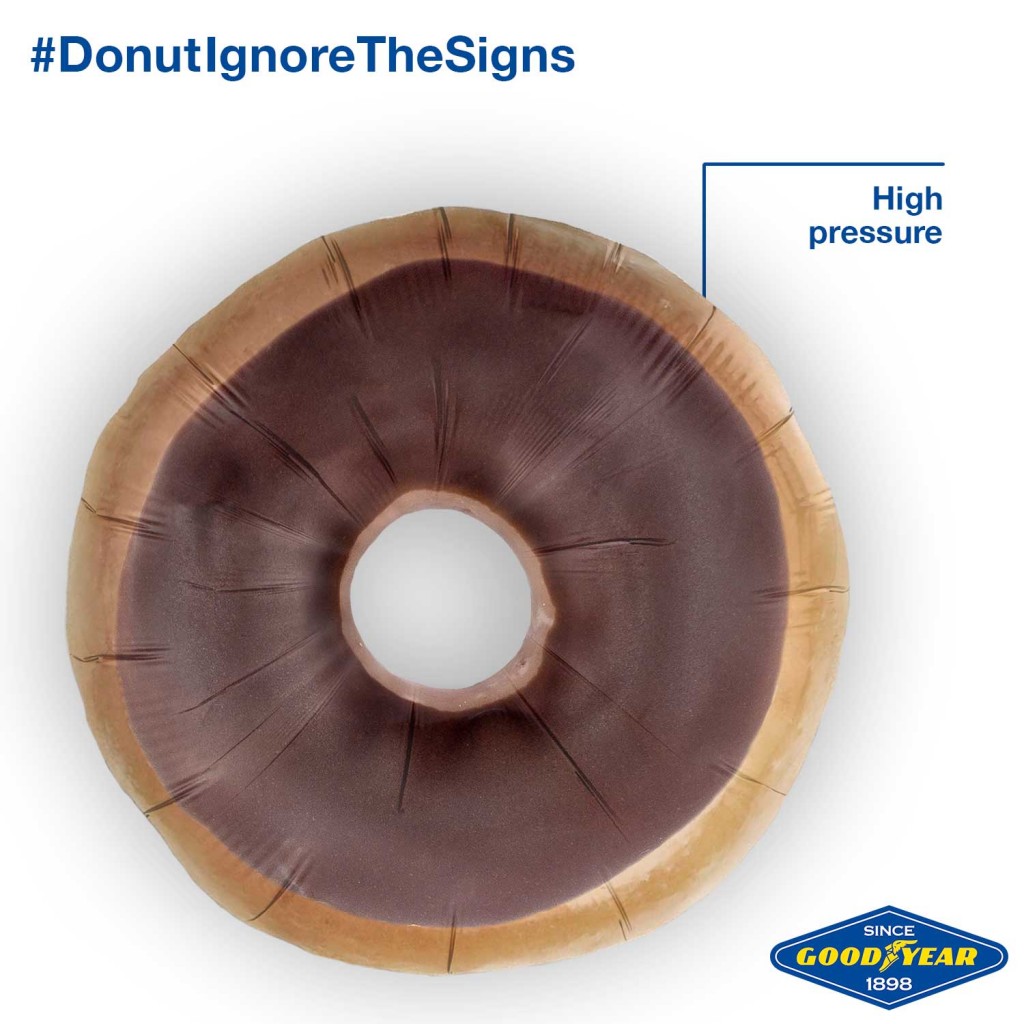
Chunk missing from the sidewall
You may find that after an argument with a kerb or a jolt into a pothole, your tyre’s missing a vital chunk of its armour. Often these are very small and can be repaired, but bigger chunks could create a bulge and result in a blow-out.
If you notice any damage or missing pieces from the sidewall you should have the tyre checked by a qualified professional.
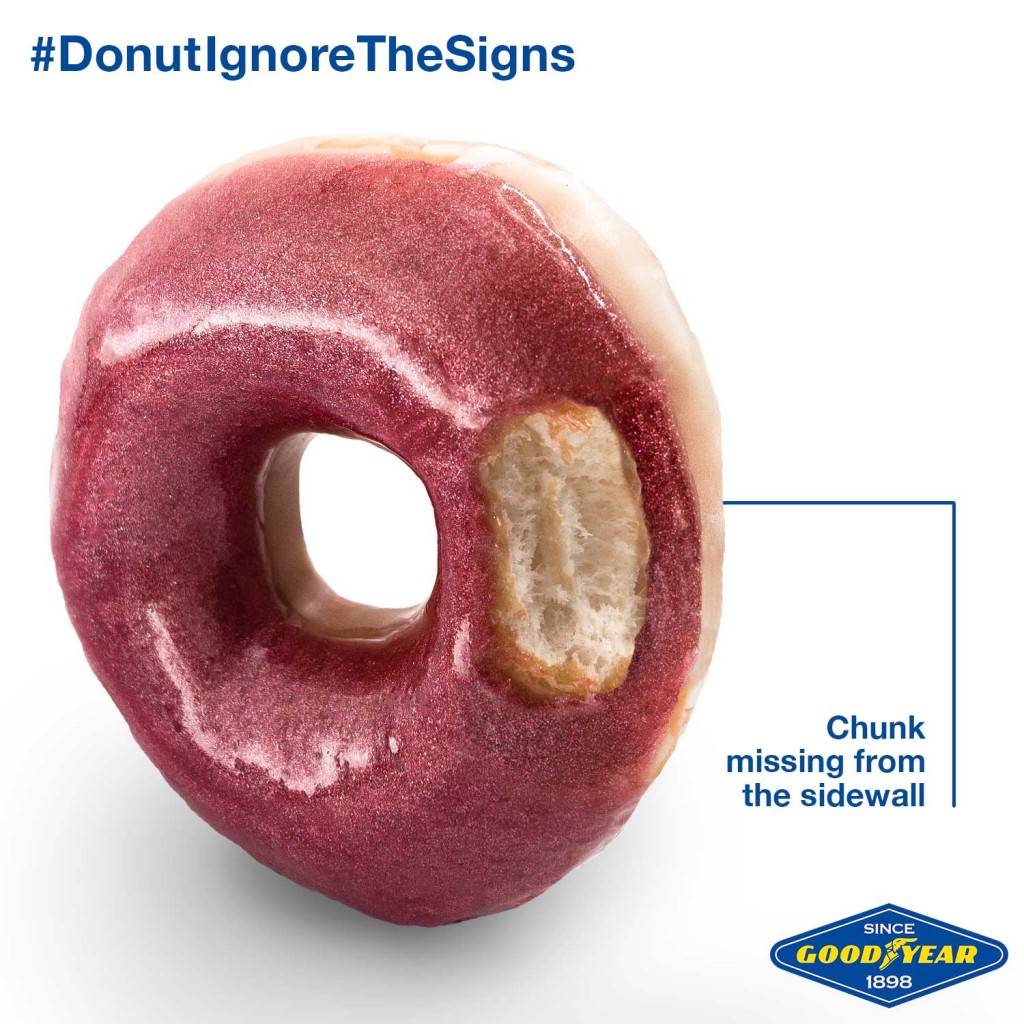
Something lodged in the tyre’s tread
Road debris is not choosey and even a brand new tyre can suffer a puncture from something like a rogue nail. If this happens, avoid the temptation to pull the object straight out, instead, take the tyre to be checked by a qualified professional.
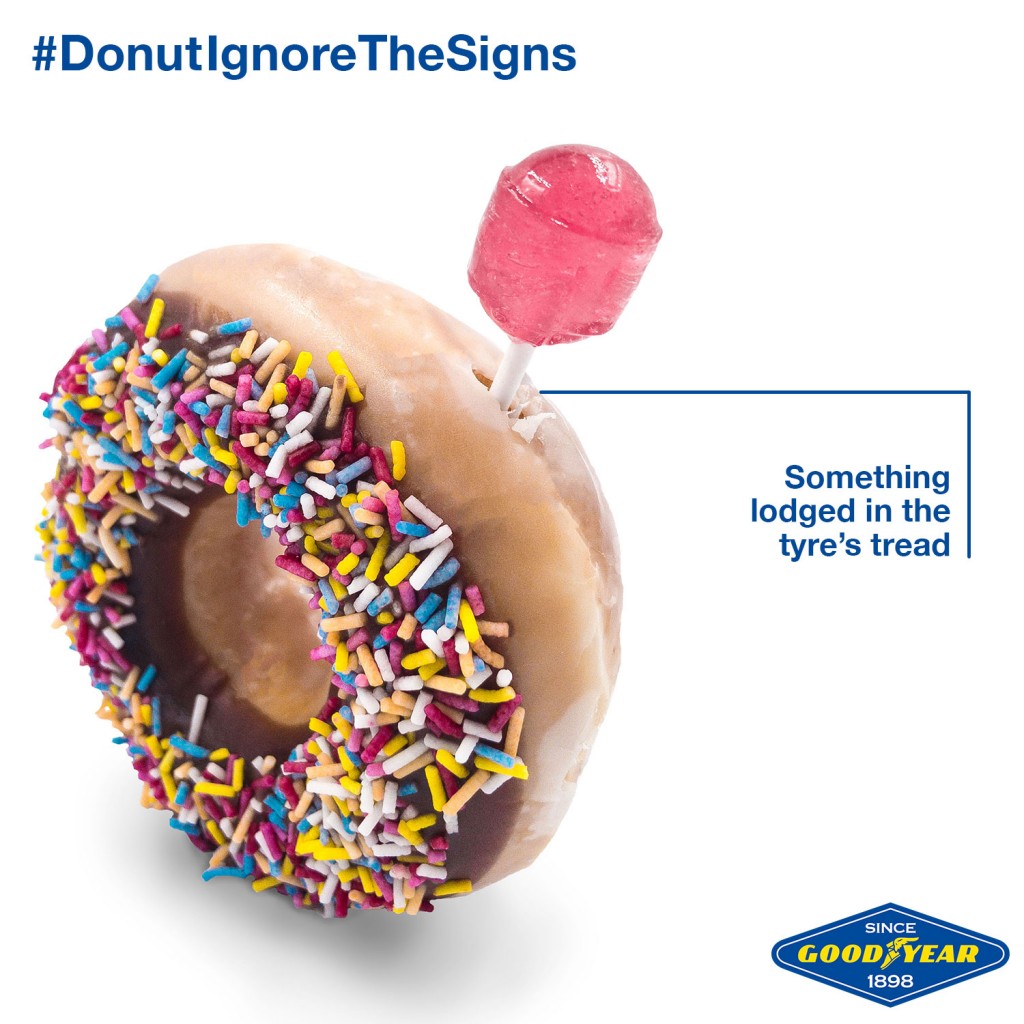
Kate Rock-Rees, Goodyear Tyres, comments: “We spend nearly 19-months of our lives commuting on them and rely on them day-in, day-out to carry us from A-B, so it’s concerning how little drivers know about their tyres.
“For many motorists, tyre maintenance is demoted to the bottom of the priority list, but by presenting their potential conditions in a playful image, our hope is that drivers will become more in-tune with their rubber and feel confident to complete at-home checks. Safety is the absolute priority for all motorists.”
Drivers can join in the conversation on social media using #DonutIgnoreTheSigns
Twitter: @Goodyear_UK
Facebook: Goodyear.UK
* DfT – https://www.gov.uk/government/statistics/reported-road-casualties-great-britain-annual-report-2016
**Online survey of 1,870 respondents conducted independently by Goodyear in April 2018
